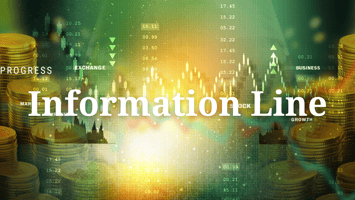|
Perspective
By Rich Checkan
As expected, the debt ceiling debate raged on until the eleventh hour. Then, miraculously, President Biden and Speaker of the House Kevin McCarthy emerged from the White House with an agreement… like Moses coming down from the mountain with the Ten Commandments.
Hallelujah!
Where’s Cecil B. DeMille when you need him?
After a few more days of histrionics, the House and Senate both passed the legislation, and President Biden signed it into law.
If you’re detecting a bit of sarcasm, you are right on the mark. Now, for the seventy-ninth time since 1960, Congress has chosen to kick the can down the road as opposed to being leaders. They have chosen, as they have seventy-eight times prior in a fifty-three-year span, to shirk their responsibility of being fiscally responsible with our hard-earned tax dollars.
This is how great empires end.
Stronger Dollar?
For the past month, as the most powerful nation on earth wrestled with how it was going to pay its bills, the U.S. dollar, the world’s reserve currency, actually got stronger versus its peers.
As measured against Canadian dollars, British pounds, euro, Swiss francs, Swedish kroner, and Japanese yen, the U.S. dollar appreciated. It went from 101 on the U.S. Dollar Index to above 104.
This is mind-boggling.
To be clear, we cannot pay our bills. So, we arbitrarily increase our own debt limit to allow us to magically create new dollars out of thin air… with nothing to back them.
At the same time, the world is finding U.S. dollars less desirable. They are buying less of our debt. They are replacing U.S. dollars in their currency reserves with gold at the fastest pace we have seen since the 1960’s. They are looking for ways to trade outside the U.S. dollar.
Yet, we are to believe the U.S. dollar is getting stronger… and the world’s only real money – gold – is falling in value.
Sorry. Try selling that to somebody else. I’m not buying it.
Gold Loses Luster
The dollar’s recent strength – which corresponds directly to gold’s recent weakness – is by no means an endorsement of the U.S. dollar or our feckless “leaders” in Washington, D.C.
Rather, the dollar’s strength and gold’s weakness are simply the markets’ reactions to what they believe the Federal Reserve will do next given the recent numbers on inflation and employment.
With inflation stubbornly holding ground or inching slightly higher, the hopes of a pause in interest rate hikes are vanishing. In addition, strong employment numbers of late – assuming you believe them – indicate that the Federal Reserve has not “broken” the economy yet.
This also leads to the belief that more interest rate hikes are coming.
Since gold is viewed as less desirable in a higher interest rate environment, the markets are giving the love to the U.S. dollar and scorning gold in the short-term.
What’s Your Next Move?
If you believe fiscal irresponsibility leads to a stronger dollar, don’t buy gold here. If you believe more debt makes an economy and a nation stronger, don’t buy gold here. If you believe increasing the money supply makes every dollar in your pocket worth more, don’t buy gold here.
For those that think this time in history is different, good luck with that.
It isn’t.
Fiscal irresponsibility is arguably the number one killer of great empires. Politicians spend more than they take in to secure votes to stay in power. They inflate the currency to finance the debt. In the end, they destroy the empire from within.
Do not be fooled. Your financial well-being hangs in the balance.
Now is the time to buy gold and silver well.
Understand that raising the debt ceiling is the opposite of fiscal responsibility. It simply allows our elected officials to continue to rack up even more debt… and they will.
Then, they will inflate the money supply. As a result, the price of everything in U.S. dollars will rise as more “worth less dollars” chase a finite number of goods and services in the marketplace.
Like the prices of everything else, the prices of gold and silver will rise as well. That’s why we say the best time to buy gold was yesterday, and the next best time is today.
As long as we price gold and silver in mismanaged fiat currency, the long-term trend will be for gold and silver prices to increase. And that’s exactly what they have done in U.S. dollar terms since the creation of the Federal Reserve in 1913.
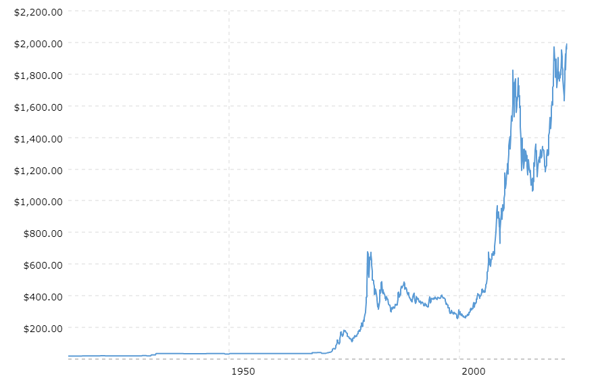
To preserve your purchasing power – which is what we mean when we say Keep What’s Yours – buy gold and silver today… while the dollar is temporarily strong… while gold and silver are showing temporary price weakness.
I purchased my first gold at $258 per ounce. I purchased my first silver at $4.53 per ounce. Back then, many “experts” believed the prices of gold and silver were too high.
They were wrong.
Today, many “experts” are saying gold and silver priced near $2,000 and near $24 per ounce respectively are too high.
Guess what? They’re wrong again.
Raising the debt ceiling was bad for the U.S. dollar, bad for our economy, and bad for our nation.
But… over time… it will be wonderful for those with the foresight to buy gold and silver.
Call us at 800-831-0007 or send us an email to do so today.
—Rich Checkan
Editor's Note: Nomi Prins is a best-selling author, financial journalist, and former global investment banker. At Rogue Economics, Nomi shines a light on the collusion that happens between Wall Street and Big Government behind closed doors, and she provides actionable steps for readers to protect and grow their wealth.
Feature
Central Bank Digital Currencies Are on the Rise… Here’s What This Means for Your Money
By Nomi Prins
Every week at Inside Wall Street, I receive fantastic questions from my readers. And every Friday, I answer as many as I can.
Up first in this mailbag edition, a question from reader Linda on the global status of the U.S. dollar, as well as the safety of our money in banks…
1) If/when Russia and China agree to trade in the yuan instead of dollars, what will happen to the U.S. dollar? Will Saudi Arabia abandon trading in the dollar? Will Europe?
2) Is our money safe in banks? We are hearing that the U.S. will go to digital dollars. Is this true? If so, will our dollars be useless?
– Linda M.
Hi, Linda. Thanks for writing in!
That’s a lot of yes-no questions. So let me preface my response with this…
There is no crystal ball to tell us how any of this will play out ultimately. Anyone who says otherwise is misinformed or, frankly, lying to you.
At the same time, I’m aware that many of our readers share these concerns. So let me address most of this as best I can.
Let’s start with your de-dollarization question…
I’ve written about this on more than one occasion in these pages (see here, and here), and, inspired by your questions, may write about this more soon.
But here’s my overall take.
China’s yuan is indeed often cited as the closest contender to the U.S. dollar’s long-lasting reign as the world’s primary currency.
But I think this theory misses an important point.
For a currency to become popular, it has to be safe, have a stable value and market depth, and have the ability to move without restrictions.
With China taking more steps to open its $20 trillion bond market to foreigners last year, the market-depth issue may soon be put to rest. But the yuan still doesn’t meet any of the other standards I mentioned.
China’s capital controls complicate the international use of the yuan. And as long as the Chinese Communist Party is in power, there will always be questions of trust and transparency.
But what about Saudi Arabia?
As I’ve explained previously, the country played a crucial role in maintaining the U.S. dollar’s world reserve currency status. That happened when President Nixon unpegged the dollar from the gold standard in 1971.
I’ll be honest…
If Saudi Arabia begins conducting its oil business with China in yuan, it would be a smack in the face for the dollar.
Those sales would lend significant weight to the yuan worldwide.
But you have to remember that oil-producing countries need to be able to invest all the money they receive for their exports. They need deep and transparent capital markets. They also need the ability to move money in and out of a country easily.
And no matter how many yuan you have, you can’t easily use or invest them anywhere outside China. Here’s why…
While China has made great strides in internationalizing its currency, it’s still far from being a world reserve currency. According to recent data from the International Monetary Fund, only 2.69% of foreign exchange reserves are currently held in the yuan.
Finally, unlike the U.S. dollar, the yuan is not a freely convertible currency.
That means its value is not determined by the market forces of demand and supply. Instead, its exchange rate against other currencies, including the U.S. dollar, continues to be managed by China’s central bank.
This goes back to my earlier point about the issue of trust. With China, that’s just too big a political risk for anyone to take. And it’s why the yuan hasn’t caught on with international investors.
To be sure, China’s efforts to undermine the U.S. dollar's status as a global reserve currency are worth paying attention to. But it’s not something that will happen overnight.
Until their currency can meet the three criteria above, the biggest threat to the U.S. dollar remains the Federal Reserve.
But if you’re still concerned, I suggest that you look into putting some of your hard-earned cash into gold.
Remember, this precious metal is the ultimate form of wealth insurance. It has preserved wealth through every kind of crisis imaginable.
The best way to buy gold is with a combination of physical gold and gold stocks. You can buy physical gold online through accredited places like the U.S. Mint.
I just wrote a piece detailing the best places and practices to buy physical gold. If you didn’t catch it, read up here.
You can also buy a gold exchange-traded fund (ETF) that is backed by physical gold. Gold ETFs offer the advantage of holding gold without the hassle of storing, securing, or transporting it. (I covered this in more detail in the April 7 mailbag edition of Inside Wall Street.)
Now, onto your remaining questions…
Is your money safe in banks?
It depends. But if your bank is FDIC-insured and you have less than $250,000 in there, you have nothing to worry about.
The important thing is to make sure that your deposits are FDIC-insured. Not all banks are. You can find out which ones are by going here.
And if you have more than $250,000 at one bank? In some cases, you can divide it into different account categories to meet FDIC limits.
For more on that, check out the FDIC’s deposit insurance FAQ page.
And, finally, will your dollars be useless if the U.S. adopts a central bank digital currency (CBDC)?
This is a great question. There’s quite a bit of confusion out there about what an all-digital dollar will look like. That’s why I just released a new video presentation on this topic – including what the digital dollar will mean for Americans.
But let me clarify a few key concepts here.
The digital dollar would be issued by the U.S. Federal Reserve, like all the U.S. dollar bills we use now. It would just be in a digital form.
This means that a digital dollar should be worth the same as its paper counterpart.
But there’s one issue. It’s easier to fabricate a CBDC out of thin air than a fiat currency.
So, if the government needed to create more money, it would be even easier than it is right now. And as we know, the greater the money supply, the less valuable each unit of it becomes.
And there’s another reason to be concerned about global governments’ interest in CBDCs… As I’ve explained before, CBDCs would help strengthen central banks’ power over the financial system.
That’s because CBDCs will be highly centralized. And this can give the government unprecedented financial control over your life.
Unfortunately, it is becoming abundantly clear right now that the U.S. will adopt a CBDC at some point.
And it’s not just the U.S. The whole world is heading in this direction.
According to the Atlantic Council Central Bank Digital Currency Tracker, 114 countries are currently exploring a central bank digital currency. This represents 95% of global GDP.
Of these, 11 countries have fully launched a digital currency. China’s pilot digital currency, called e-CNY, reaches about 260 million people. It’s set to expand to most of the country in 2023.
So, interestingly, the U.S. is actually lagging behind.
Since the digital dollar will enable the Fed to inflate our money supply even more than it is now, consider gold again as a safe-haven asset.
When you get an unprecedented glut of freshly printed money, you’ll have investors scrambling for time-tested cash alternatives to protect their savings from inflation. This will create a bubble in gold.
In my new video presentation, I share details of my No. 1 gold pick for 2023 and beyond. If you’re interested in learning more, watch it here.
Next, reader Dennis wants to know about a specific government bill. He also has a similar question to Linda regarding the safety of our money in banks, including credit unions…
I am interested in hearing your response to Executive Order 14067, and do you have any recommendations as far as protecting our monies in banks and savings accounts, including credit unions?
– Dennis M.
Hi, Dennis. Thanks for your questions and observations!
Let me start by addressing the first part of your question…
For anyone who’s not aware, on March 9 of last year, President Biden signed Executive Order 14067. It’s titled Ensuring Responsible Development of Digital Assets.
This bill was important since it marked the first time the White House formally weighed in on cryptocurrencies.
I distinctly recall rumors and fears of regulatory crackdown mounting in the days leading up to it.
And then it finally happened…
Surprisingly, the order did not announce new regulations for the industry… Nor did it lay out specific positions the administration wants agencies to adopt.
If anything, it legitimized the crypto space by acknowledging the “explosive growth” of digital assets… and affirming that the U.S. “must maintain technological leadership in this rapidly growing space.”
It also tasked the U.S. Department of the Treasury and other federal agencies with developing a regulatory plan… underscoring key areas like consumer protection, national security, and illicit finance.
In other words, it has given us hope for a regulatory framework for cryptos.
Keep in mind that, as of today, no one regulatory watchdog oversees the cryptocurrency market.
This creates a kind of regulatory uncertainty. And it makes government agencies like the SEC wary of crypto. For example, the SEC openly said that “most cryptocurrencies are securities” and “operate illegally.”
That, in turn, pushes leading crypto companies like Coinbase to explore relocation options to ensure their growth and success.
Make no mistake. Smart and responsible regulation – as opposed to a regulatory crackdown – is absolutely needed if the crypto industry is to flourish in the U.S.
So, I welcome that part of Biden’s crypto order.
But then there’s the part where it may lead to the creation of a U.S. digital currency…
You see, Biden’s executive order 14067 directs the government to assess the technological infrastructure and capacity needs for a CBDC.
As I’ve said before, a CBDC isn’t necessarily all bad.
It might come in handy if you need to receive a stimulus check… or even spark innovations in the financial sector.
That said, I don’t think that the potential benefits outweigh the potential dangers.
I find it worrisome that, with a digital dollar, the government could have complete knowledge of – and control over – every transaction you make.
Now, to address the second part of your question…
There are things you can do to protect yourself in case there’s another ticking time bomb waiting to go off in the banking sector.
And the most important precaution you can take is to make sure your deposits are FDIC-insured. I went into more detail on this in my response to Linda above… and in a recent essay.
What about credit unions?
I replied to a similar question in the March 24 mailbag edition of Inside Wall Street. I encourage everyone to give it a read.
In short, there’s a government agency called the National Credit Union Administration (NCUA) that regulates and protects credit unions and their owners. It does so the same way the FDIC insures bank deposits.
Finally, our last question this week is from Bruce, who wants to know about a specific program of the West Australian Perth Mint…
While you were in West Australia at the Perth Mint, did you look into their “gold you can fold” program?
It allows us to buy unallocated gold, silver, and platinum by certificate at very low premiums. They store it, and we can receive our precious metals anytime we request them.
I’m told that this is the easiest way to purchase precious metals at the lowest cost, all backed by the government of West Australia.
What is your opinion of this program?
– Bruce R.
Hi Bruce, thanks so much for your great question.
The Perth Mint Certificate Program, to which you are referring, is an excellent program.
That’s because it provides precious metal buyers with other purchasing options than the Perth Mint. But your purchase is as secure as if you bought it from there.
Under this program, you can buy allocated or unallocated gold, silver, or platinum through a list of third-party distributors that are approved by the Perth Mint. And you’ll receive the same certificate of authenticity from the Perth Mint as if you bought these products from the Mint directly.
This certificate is a binding legal agreement that certifies you as the owner of your precious metals. It also tells you where they are stored.
Plus, it confirms that the Perth Mint holds 100% physical gold (or whatever metal you bought) in reserve to back your purchase. This is a big deal.
The program also gives you the same government guarantee that you would have if you bought precious metals directly from the Perth Mint.
Happy investing,

Nomi Prins
Editor, Inside Wall Street with Nomi Prins
P.S. The Federal Reserve, the White House, and the financial elite are set to enact the biggest change to our money since 1971. In fact, I’ve found evidence that a small group of powerful people are colluding to virtually “ban” cash – leading to the end of the dollar as we know it.
This historic shift is set to unfold as soon as July 31. And if you have more than $2,500 in savings or stocks, your financial future could be at risk.
The good news is, there are ways to fight back. In this new video presentation, I’ll show you the No. 1 step I recommend you take today to escape the clutches of this power grab… along with details of my top gold pick for 2023. If you’re at all worried about what’s next for the dollar, and what it means for your nest egg in the months ahead, don’t wait. Watch it here.
Editor's Note: Joshua Rotbart (LLM, MBA) is a corporate lawyer who has worked with some of the most reputable law firms in Israel until he chose a career in precious metals in 2010. He began as the head of the precious metals division of one of the biggest secure logistics and vault operators in the world before founding J. Rotbart & Co. in 2016.
Hard Stuff
Nothing New Under the Sun
By Joshua Rotbart
In the year 301 A.D., the Roman emperor Diocletian issued his famous "Edict on maximum prices". This law attempted to fix the prices of commodities, wages and freight rates throughout the empire. It named the prices of no less than a thousand different products, from grain and wine, to the prestigious purple silk, which was used to make the robes of the aristocracy. Copies of the edict were presented in every town square, and any violation was punishable by death.
Diocletian believed that by fixing prices he could stop the inflation that was ravaging the economy at the time. Needless to say that his attempt has failed miserably. Merchants would rather risk death than sell their products at a loss. The edict was largely ignored, and eventually abandoned.
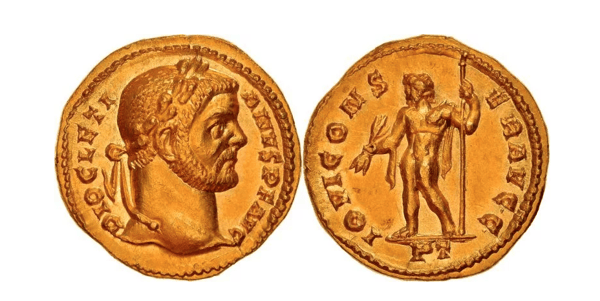
The inflation which the Romans were dealing with did not happen overnight. It was the result of an entire century of political turmoil and currency debasement. Beginning in the year 193 A.D., which saw no less than five different emperors vying for control, the Roman empire was plagued by civil wars, epidemics and barbarian invasions. In order to deal with these crises, its leaders resorted to gradually reducing the silver content of the denarius, which was the coin of the realm.
From a coin which originally was made of almost pure silver, it has slowly turned into a bronze coin, with nothing but a thin silver coating. Over time, the merchants noticed that the new denarii were less valuable than the old ones, and increased their prices accordingly. But they were not responsible for the inflation. As always, the expanding money supply was strictly the fault of the government. Most people were impoverished by this inflation, but those who kept their savings in gold were immune to it.
Centuries have passed, but the principals which governed the economy during the days of the Roman empire still apply. At the end of World War II, delegates of the 44 allied nations convened at the Mount Washington Hotel in Bretton Woods, New Hampshire. It was agreed that from then on the U.S. dollar would serve as the global reserve currency. The U.S. would back its currency with gold, and the rest of the nations, which were devastated by the war and had very little gold reserves left, would back their currencies with dollars. The link between the various national currencies and gold was weak and indirect, but it existed nonetheless. This gave them enough credence to support the post-war reconstruction, and the world economy was able to prosper once again.
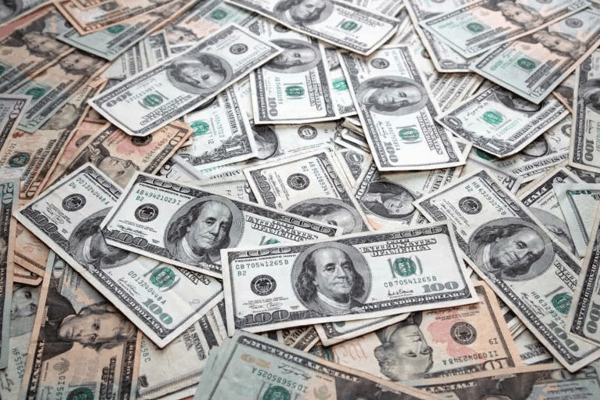
However, during the 1950’s and 1960’s, the U.S. government took a different approach. The federal government has spent ever increasing sums on the wars in Korea and Vietnam, and on expanding social benefits, such as social security, food stamps, Medicare and Medicaid. In order to fund these programs, the Federal Reserve was forced to issue dollars far in excess of the gold it had to back them.
Effectively, this has debased the dollar, just as the Romans have done with their silver denarius. As a result, the rate of inflation in the US started to creep up, from an average of 1% during the early 60s, to 4.5% at the end of the Lyndon Johnson presidency. Led by France, America’s trading partners have begun to convert their overvalued dollars to gold. During that period, the reserves at Fort Knox declined from about 20,000 to just under 10,000 metric tonnes.
When Richard Nixon rose to power in 1969, he had little choice but to renege on the Bretton Woods agreement. On August 15th 1971, he delivered his famous televised address, in which he suspended the convertibility of dollars into gold. This severed the last tie between our currencies and a tangible commodity. Few people remember, but on the same occasion he also imposed a 90-day freeze on all wages and prices, just like emperor Diocletian did 1,670 years earlier. Unsurprisingly, this had no long-term impact on inflation. It abated for a short while, but then started to rise again, reaching no less than 12% in 1974, and over 14% by 1980.
Yet again, those who were wise enough to keep their savings in gold were protected from inflation. During the 1970's, the price of gold rose from about $40 an ounce all the way to $800 an ounce, compensating its holders for the dramatic decline in the purchasing power of the dollar.
Today we are living in a “fiat world”. Our currencies are backed by nothing, and are no longer even printed on paper. They are largely digital entries on some bank server, and can be created at the push of a button. As many in the sound money community have predicted, the rapid expansion of the money supply we have seen in the past decade has led to inflation.
This fact can no longer be denied, even by the most ardent Keynesian economist. Governments and central banks across the western world may try to blame it on the war in Ukraine, or on the disruptions to the supply chain which followed the COVID-19 pandemic. But the rate of inflation in the US was already 7.5% before the Russian invasion of Ukraine, and to our view, the disruptions in the supply chains were the result of the brewing inflation, and not the cause of it. Unchecked money printing has increased aggregate demand, above and beyond what the suppliers could possibly handle.
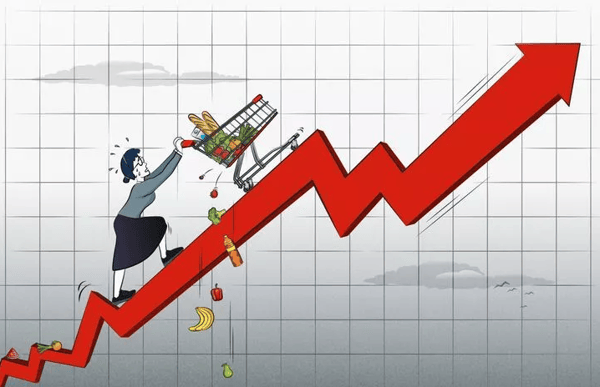
The only surprising aspect of the current financial situation is that the price of gold has not moved substantially higher. In the summer of 2020 it set an all time of $2,075, but since then it has entered a prolonged period of consolidation. Lately, it briefly touched this level again, against the backdrop of the developing banking crisis in the US.
But it is yet to break out of this trading range, and resume its upward trajectory. This left many precious metals investors perplexed. How come the performance of gold has been so underwhelming, in the face of such persistently high inflation? Well, first of all, we wish to remind you that this consolidation comes after an impressive 70% rise in the price of the metal, which occurred between 2018 and 2020. It is as though the price of gold has anticipated the inflation, and reacted in advance. Therefore it is only natural for it to consolidate, in preparation for any future move.
Furthermore, we wish to point out that though the price of gold has been moving sideways in dollar terms, it has been setting record highs in terms of other currencies. The price of gold is at all time highs in terms of Euros, British pounds, Japanese Yen, Canadian dollars and Australian dollars. We believe that the citizens of these major economies, who happen to be holding gold, are quite pleased with their investment.
It is mainly to Americans that gold’s performance appears lackluster. Indeed, due to a decisive tightening campaign by the Federal Reserve, the US dollar has been remarkably strong during 2022. But as Jerome Powell has signaled recently, this tightening cycle is drawing to its end. We suspect that the current turmoil in the banking sector will not permit rates to go much higher, and that the dollar will no longer be a headwind to the price of gold.
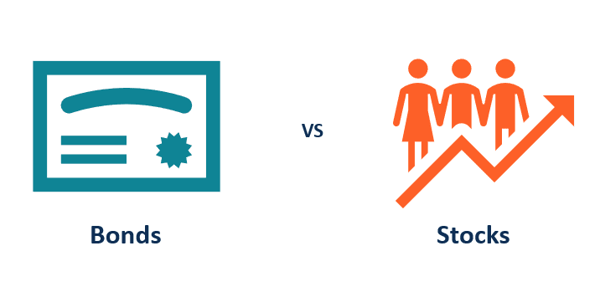
Last but not least, we wish to bring to your attention a new factor that may impact the price of precious metals positively, and only recently became relevant. As you may know, most asset portfolios are managed nowadays according to the 60/40 model, which divides the capital between two asset classes – stocks and bonds. Stocks are considered as the risky and volatile portion of the portfolio, while bonds are supposed to be stable and boring. Stocks are expected to perform well In good times, and provide most of the growth. Bonds, on the other hand, are supposed to perform well in bad times, and compensate investors for any declines in the stock market. However, this theory works well only in a high growth, low inflation environment, the kind of which we’ve had continuously since the early 1980s.
But now circumstances have changed. As you may recall, there’s an inverse ratio between the yield of a bond and its price. In the past three years interest rates across the world have risen considerably, which has pushed the price of these bonds down. To illustrate this point, please consider the price of the ishares TLT ETF, which invests in long dated US treasuries. Since its all time high, which was reached in March of 2020, this ETF has lost over 40% of its value. That is a tremendous loss of capital, for an investment vehicle which is supposed to be the safest in the world, and the cornerstone of every retirement portfolio.
Thus far the losses in the bond market have been substantial, but they haven’t triggered a complete collapse. It seems that investors are expecting the bond market to rally, in response to the banking crisis and a falling rate of inflation. As a result, the US treasury yield curve is deeply inverted, and long dated bonds are trading at a lower yield than short term treasury bills. But if for some reason these expectations will not materialize, for instance if inflation turns out to be hotter than expected, or if a major issuer suffers a default, the bond market may enter a protracted bear market. In this case asset managers will need to ask themselves – what safe and reliable alternative is there to bonds?
We believe that there is nothing new under the sun, and that gold will once again serve as a safe haven. Right now the allocation to precious metals in the average portfolio is negligible. If only a small fraction of the roughly 200 trillion dollars invested in financial markets across the world finds its way to gold, this could have a dramatic impact on the price.
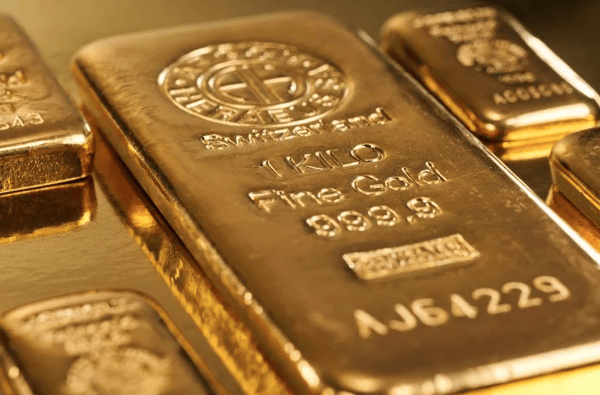
Therefore we urge you to be patient. History has demonstrated time and again that precious metals perform exceptionally well in times of crisis and high inflation, and we are confident that this time will not be any different. There is reason to believe that the inflation we are witnessing today is far from over, and that it will accompany us for years to come, just as it did during the 1970's. It seems that the public has not yet caught wind, and still has full faith in the Federal Reserve’s ability to bring inflation down to pre-pandemic levels. Unfortunately, we don’t share this belief. In our opinion, this consolidation in the price of gold should be regarded as a buying opportunity.
|









